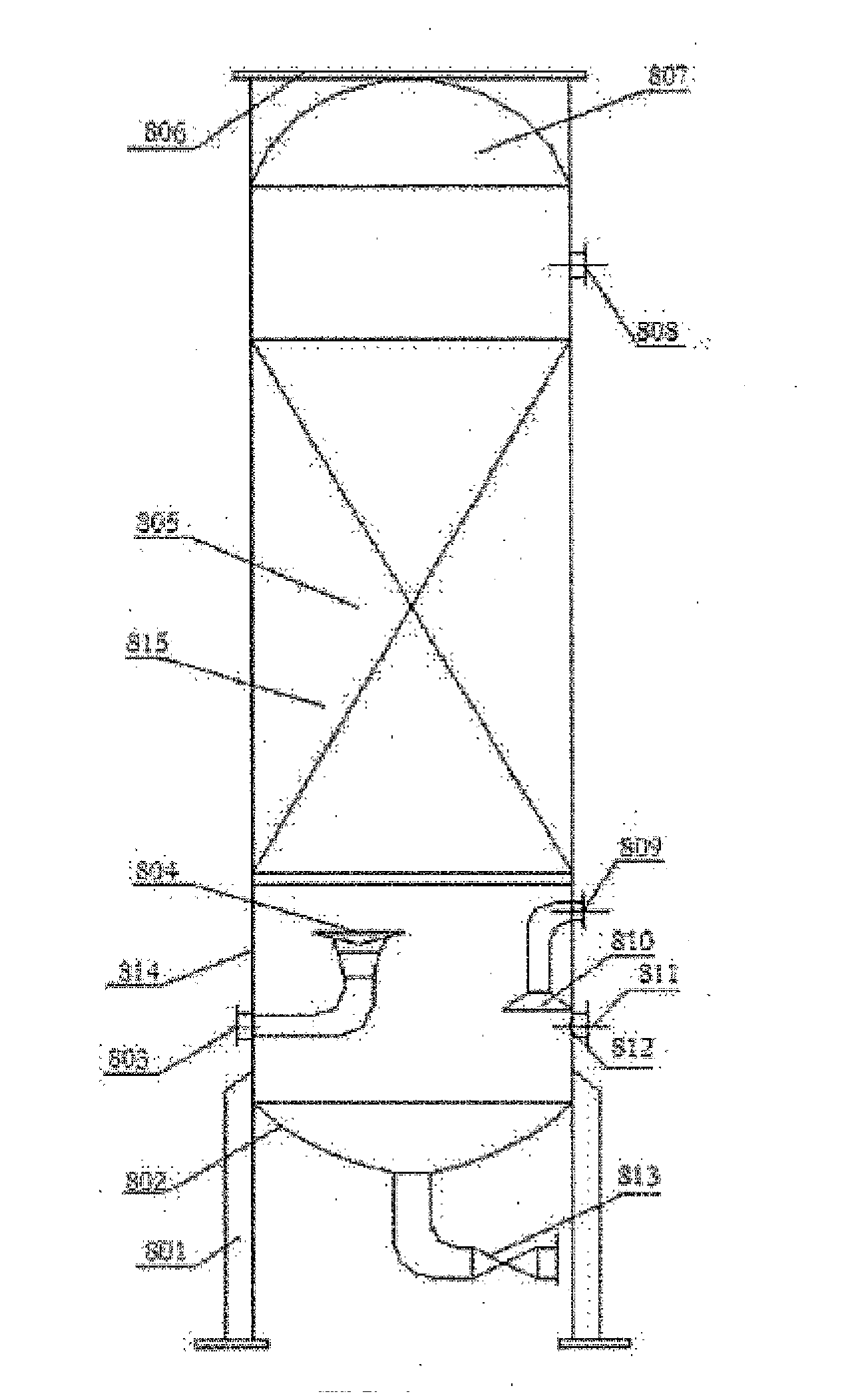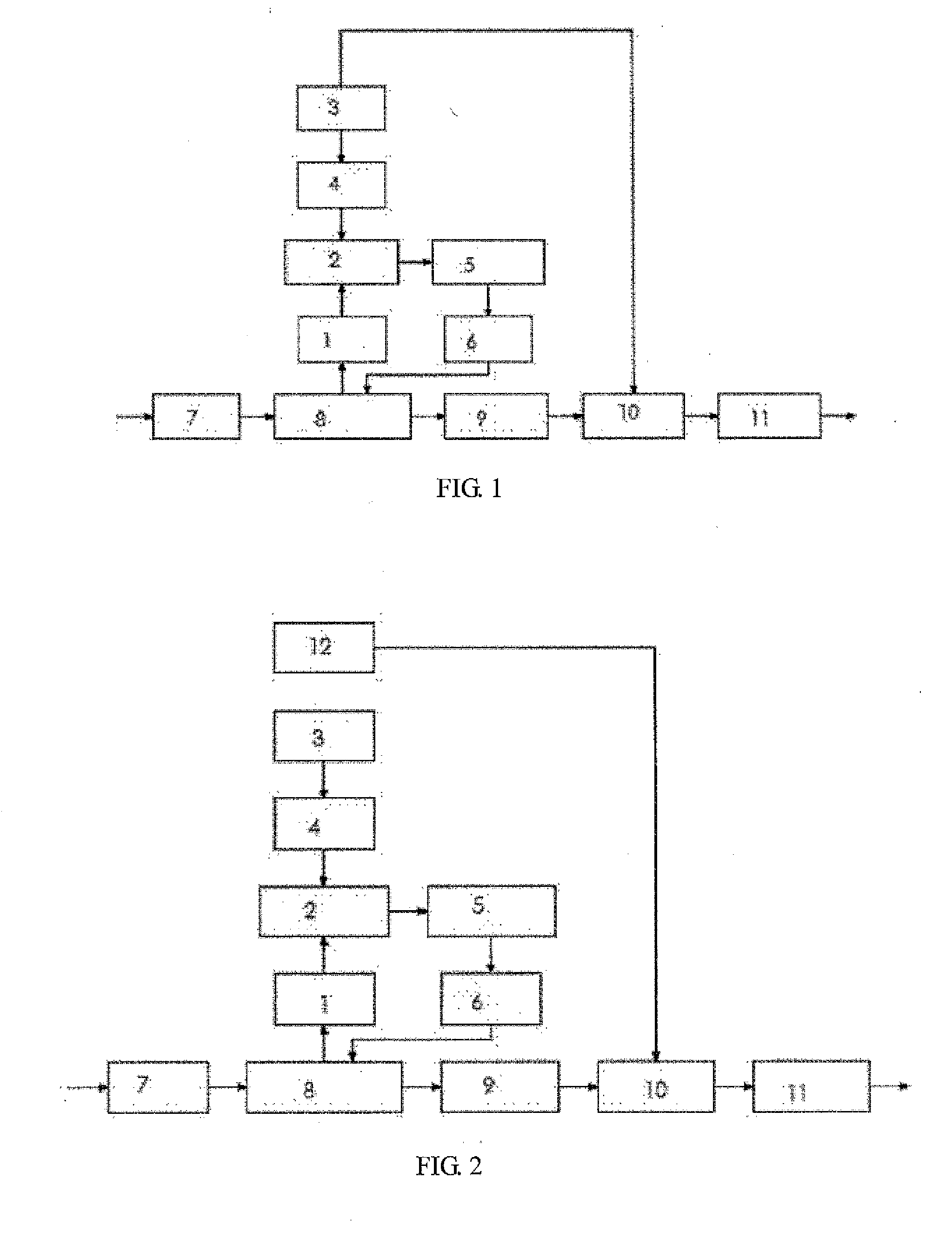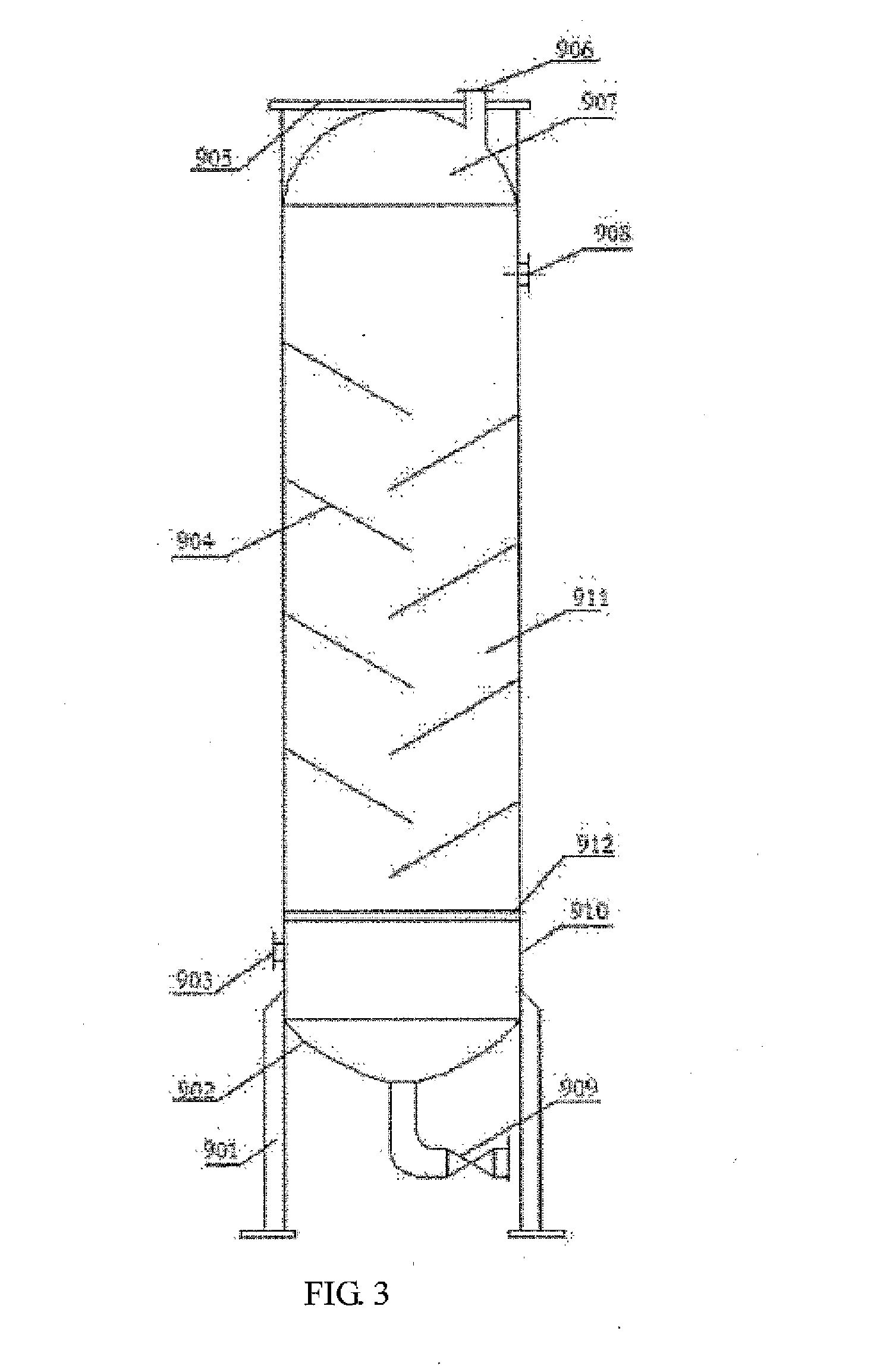Sewage treatment system and method thereof
a sewage treatment system and sewage technology, applied in the field of sludge treatment, can solve the problems of water pollution worsening dramatically, affecting the utility value of sewage treatment, and affecting the quality of sewage treatment,
- Summary
- Abstract
- Description
- Claims
- Application Information
AI Technical Summary
Benefits of technology
Problems solved by technology
Method used
Image
Examples
embodiment 1
[0065]FIG. 1 illustrates a wastewater treatment system according to the present invention, comprising a first centrifugal pump 1, a first Venturi mixer 2, a 5 L / min first oxygen generator 3, a 30 g / h first ozone generator 4, a first catalytic reactor 5 with a mean outer diameter of 100 mm, a first heat exchanger 6, a wastewater pump 7 with a flow rate of 2 m3 / h, a tilted-plate catalytic tower 8, a packed catalytic tower 9, an aeration biological tower 10 and a water storage tank 11;
[0066]the first oxygen generator 3, the first ozone generator 4, the Venturi injector 2, the first catalytic reactor 5, the wastewater pump 7, the first heat exchanger 6, the wastewater pump 7 and the first centrifugal pump 1 are mutually connected by pipes and installed together in a first enclosure of steel structure, the tilted-plate catalytic tower 8, the packed catalytic tower 9, the aeration biological tower 10 and a water storage tank 11 are installed together in another first enclosure, and the tw...
embodiment 2
[0115]As shown in FIG. 2, the difference between Embodiment 2 and Embodiment 1 lies in that: The wastewater treatment system also comprises an air blower 12, and the second inlet of the aeration biological tower 10 is connected with the second outlet of the air blower 12; the outlet of the air blower 12 is connected with the inlet of the first oxygen generator 3 by a pipe. The wastewater pump 7 is a centrifugal wastewater pump; the first oxygen generator 3 is a molecular-sieve oxygen generator;
[0116]in Step (2), the second inlet of the aeration biological tower 10 is connected with the air blower 12 by a pipe.
[0117]Cyclic treatment is made to refuse leachate, and the data before and after treatment are shown in Table 2.
TABLE 2AfterWater QualityOriginalTreatmentAfter TreatmentDegradationParameterSamplefor 30 minfor 2 hRatepH7.827.727.50—COD (mg / L)75251956752.5 90%Ammonia490.2323.2306.137.6%nitrogen (mg / L)Total1.701.570.7555.9%phosphorus(mg / L)Chromaticity3501003091.4%
[0118]As we can ...
embodiment 3
[0119]The difference between Embodiment 3 and Embodiment 1 lies in that: An overflow treatment experiment is made to the wastewater that has been treated by the wastewater treatment station of an alcohol plant but is not up to standard, and the data before and after the treatment are shown in Table 3.
TABLE 3ParameterOverflowCOD AfterWater YieldOverflow TreatmentDegradation Rate of(L)COD (mg / L)(mg / L)COD (%)100451382.215.3200452.6393.613.0300468.5409.912.5400480.2460.24.16500480.2460.24.16600468.5429.48.35700468.5429.48.35800452.6423.16.52900468.5439.26.251000450.8411.68.70
[0120]As we can see from Table 3, an overflow treatment is made to the wastewater that has been treated by the wastewater treatment station of an alcohol plant but is not up to standard, where the wastewater is introduced in different flows and the CODs of the wastewater are all reduced to some extent, and the lower the flow of the wastewater is, the longer the reaction time is, the higher the treatment efficiency i...
PUM
| Property | Measurement | Unit |
|---|---|---|
| specific surface area | aaaaa | aaaaa |
| angle | aaaaa | aaaaa |
| length | aaaaa | aaaaa |
Abstract
Description
Claims
Application Information
 Login to View More
Login to View More - R&D
- Intellectual Property
- Life Sciences
- Materials
- Tech Scout
- Unparalleled Data Quality
- Higher Quality Content
- 60% Fewer Hallucinations
Browse by: Latest US Patents, China's latest patents, Technical Efficacy Thesaurus, Application Domain, Technology Topic, Popular Technical Reports.
© 2025 PatSnap. All rights reserved.Legal|Privacy policy|Modern Slavery Act Transparency Statement|Sitemap|About US| Contact US: help@patsnap.com



